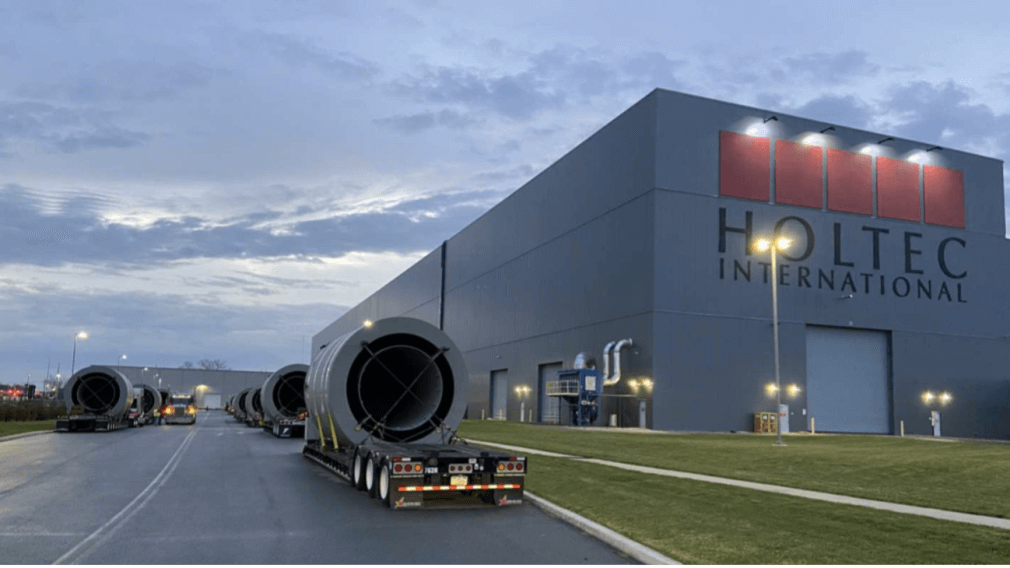
Holtec Britain has chosen South Yorkshire as the location for its planned £1.5 billion small modular reactor (SMR) factory, pending a final investment decision (FID).
The announcement marks a major step forward in the global race to develop SMRs, compact nuclear reactors with capacities of around 300MW, known for their faster construction due to modular designs.
Holtec Britain, along with other companies like GE-Hitachi, NuScale Power, Rolls-Royce SMR, and Westinghouse Electric Co., is competing in the UK government’s SMR competition, run by Great British Nuclear (GBN).
The competition will see one or two designs receive government backing for deployment. Even without GBN support, companies like Holtec are keen to pursue private deployment of their SMRs, requiring factories to fabricate the modules for these advanced nuclear reactors.
Holtec’s selection of South Yorkshire as the preferred site for its factory follows a rigorous evaluation process, which also considered locations in the West Midlands, Tees Valley, and Cumbria. The region’s established credentials in clean technology, alongside a strong local workforce, helped secure South Yorkshire’s bid.
In a statement, the South Yorkshire Mayoral Combined Authority (Symca) said, “South Yorkshire is already home to the UK’s largest clean-tech cluster and has unique strengths in SMRs, hydrogen, and sustainable aviation. Holtec’s decision to build its new major SMR facility in the region has cemented South Yorkshire’s place as the natural home for emerging clean energy sectors.”
The £1.5 billion investment is expected to generate hundreds of high-skilled jobs, with analysis by Bradshaw Advisory predicting the factory will provide 3,000 engineering jobs over the next 20 years and create a £30 billion export opportunity over the next decade. Holtec Britain director Gareth Thomas praised South Yorkshire for overcoming stiff competition, highlighting the support received from local authorities and the dedication of the region’s workforce.
“In addition to the technical, supply chain, training, and logistics criteria, we were also impressed by the history and pride of the people we met in South Yorkshire. This demonstrated a workforce that really cares about the quality and reputation of their work,” Thomas said. He added that Holtec’s new factory would play a central role in the company’s UK operations, producing components for both civilian and naval nuclear reactors.
South Yorkshire Mayor Oliver Coppard celebrated the decision, saying, “We’re building on hundreds of years of innovation and engineering heritage to create world-leading facilities, skills, and expertise today. That’s why Holtec has chosen South Yorkshire as the home of their £1.5bn manufacturing facility. Their decision has the potential to support hundreds of high-paying jobs, and their SMR Learning Academy will help train the next generation of nuclear engineers.”
Holtec’s factory will join other major clean energy projects in the region, including the forthcoming Rolls-Royce SMR facility, further solidifying South Yorkshire’s position as a hub for clean technology. Rolls-Royce SMR, which recently invested £2.7 million in its own SMR module manufacturing site, has been refining its production process to ensure efficient delivery of its reactors.
With Holtec’s factory slated to serve not just the UK, but also Europe and the Middle East, South Yorkshire’s role in the global clean energy transition is set to grow. The combined efforts of Holtec and Rolls-Royce will ensure the region remains at the forefront of the emerging SMR sector, helping drive the UK’s clean energy transformation.
(Image credit: Holtec)